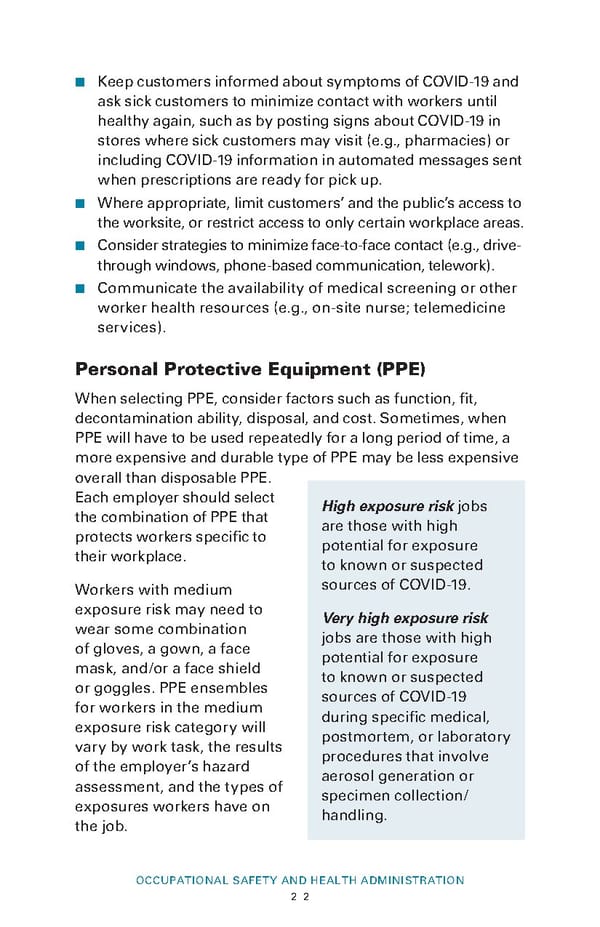■ Keep customers informed about symptoms of COVID-19 and ask sick customers to minimize contact with workers until healthy again, such as by posting signs about COVID-19 in stores where sick customers may visit (e.g., pharmacies) or including COVID-19 information in automated messages sent when prescriptions are ready for pick up. ■ Where appropriate, limit customers’ and the public’s access to the worksite, or restrict access to only certain workplace areas. ■ Consider strategies to minimize face-to-face contact (e.g., drive- through windows, phone-based communication, telework). ■ Communicate the availability of medical screening or other worker health resources (e.g., on-site nurse; telemedicine services). Personal Protective Equipment (PPE) When selecting PPE, consider factors such as function, fit, decontamination ability, disposal, and cost. Sometimes, when PPE will have to be used repeatedly for a long period of time, a more expensive and durable type of PPE may be less expensive overall than disposable PPE. Each employer should select High exposure risk jobs the combination of PPE that are those with high protects workers specific to potential for exposure their workplace. to known or suspected Workers with medium sources of COVID-19. exposure risk may need to Very high exposure risk wear some combination jobs are those with high of gloves, a gown, a face potential for exposure mask, and/or a face shield to known or suspected or goggles. PPE ensembles sources of COVID-19 for workers in the medium during specific medical, exposure risk category will postmortem, or laboratory vary by work task, the results procedures that involve of the employer’s hazard aerosol generation or assessment, and the types of specimen collection/ exposures workers have on handling. the job. OCCUPATIONAL SAFETY AND HEALTH ADMINISTRATION 22
 Guidance on Preparing Workplaces for COVID-19
Page 23 Page 25
Guidance on Preparing Workplaces for COVID-19
Page 23 Page 25